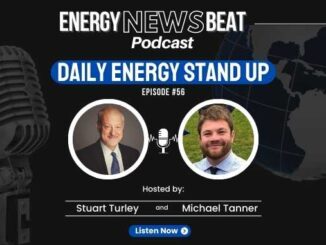
Sustainability-linked loans, or SLLs, have only been around for a few years. In that short time, they have ballooned into a market worth $1.5 trillion. But now, as scrutiny comes for sustainability claims with no substance, that market faces a reckoning. And so do the banks that lent those money.
Source: Oil Price
The first sustainability-linked loan was the work of Dutch ING Groep and was closed in 2017. Since then, sustainability-linked loans have become the second-largest ESG market in the world, after so-called green bonds.
The essence of SLLs is that the borrower can benefit from a slightly lower interest rate in exchange for undertaking commitments in the environmental department—a principle that’s pretty similar to how ESG investment funds operate. But just like ESG investment funds, regulators—and investors—have now started to question the validity of sustainability-related claims by bond issuers and bank borrowers.
In a recent article on the issue, Bloomberg noted that the situation has reached a point where banks that provide SLLs are looking for legal cover in anticipation of greenwashing lawsuits. This anticipation could prove legitimate because banks did not check their clients’ ESG commitments in detail before granting loans, nor did they check whether these clients were using the money for environmental, social, or governance improvements.
They were not meant to check, and they did not need to—or so they thought. The great attraction of sustainability-linked loans lies in the fact that the borrower, as Reuters notes in a recent article, can use the money for pretty much whatever they want—because the bank classifies the loan as part of its own ESG efforts and does not seem to be too bothered whether the ESG claims of the borrower have substance or not. Did anyone say greenwashing?
Bloomberg noted in its article that sustainability claims made by borrowers are not made publicly available, and the market for sustainability-linked loans is not regulated. In other words, a company could take out a sustainability-linked loan and pay an interest rate that’s between 2.5 and 10 basis points lower than a regular loan, swearing it will use the money to sustainable ends. Then, it can take the money home and do anything it wants with it, even if it has nothing to do with sustainability.
The bank, meanwhile, does not care what the borrower would use the money for because it has already filed the loan under its own sustainability targets, and considered it a step in the right direction of hitting these targets. It seems these SLLs have been as popular with lenders as they have been with borrowers.
So, in a matter of six short years, a market that went from zero to $1.5 trillion is about to suffer some tremors as banks’ lawyers warn the reputational risks have become too great to ignore. The situation smacks a bit of the subprime mortgage crisis from 2007. A market for obscure financial products getting out of regulatory hand is always a dangerous situation.
Perhaps nobody could have predicted the questions that would start popping up about the actual substance of ESG claims made by companies. Perhaps nobody anticipated the political backlash in conservative U.S. states. Yet both these things are happening and are shaking the very foundations of the whole ESG market.
Reuters recently did a survey among banks and found that only one of the 14 did not file the SSLs it provided under its own sustainability efforts. All the rest did just that, essentially assuming that the borrower would use the loan as promised. It really is no wonder that scrutiny is tightening up, and as a result, SLLs are on the decline.
Bloomberg reported earlier this month that sustainability-linked loan issuance in the United States has dropped by as much as 80% amid growing concerns about greenwashing and higher interest rates. Issuance is down in other regions, too, as regulators start to pay attention to these loans, just as they started paying attention to other green claims made by companies eager to benefit from the ESG investment trend.
With investment funds now rebranding and dropping words like “sustainable” from their names amid growing investor caution, it was only a matter of time before banks started paying attention, too. Per Bloomberg, this attention has taken the form of seeking help from legal professionals and devising cover in the contracts for SLLs.
The cover appears to be a loophole allowing banks to reclassify SSLs as ordinary loans should the borrower not use the money to advance its ESG goals as promised. In other words, banks are admitting they have no way of enforcing the terms of the loan contract on the borrower and are looking for a way out of potential greenwashing accusations by changing these terms.
By Irina Slav for Oilprice.com



